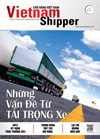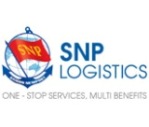Following successful pilot tests with key US retailers, APL will take delivery of the world’s first ‘ocean-capable’ 53-foot boxes on November 7th. The first units will be deployed on APL’s South China-Los Angeles service.
Having developed outsize containers in the 1980s, APL said its latest innovation – premium big-box service on a regular, weekly basis – has the potential to make a significant difference to the economics of Transpacific trade.
APL introduced the industry’s first 45-foot container in 1980, the 48-footer in 1986, and the domestic 53-foot box in 1989, which has become fundamental to domestic intermodal transportation in the US.
But to date, other than for occasional cargo lifts when repositioning new containers from Asia to the US, 53-foot boxes haven’t been strong enough to withstand ocean voyages. Instead, importers ship cargo to the US West Coast in 20-, 40- or 45-foot boxes, then trans-load their shipments to 53-foot containers at US ports for truck or rail transport to the final destination.
The new, reinforced 53-foot boxes, which are built specifically for international trade, will enable cargo to be transported from factories in Asia to US destinations without trans-loading.
“In the challenging, congested business environment we face today, with enormous escalation in rail and other inland transportation charges, our customers’ primary drivers are speed, predictability and cost effectiveness,” said Bob Sappio, APL’s senior vice president for the Transpacific Trade.
Sappio added that APL’s new 53-foot ocean containers will address three critical global trade issues:
- Cost - by using 53-foot boxes, shippers can gain better cube economics and eliminate trans-loading expenses
- Supply chain congestion - two 53-foot containers hold the contents of three 40-footers, so there should be fewer containers to handle and fewer moves
The environment - by cutting down on trans-loading and reducing the number of truck moves, traffic and exhaust emissions can be reduced
eyefortransport




.jpg)








